Visiting Museums, Galleries, And Landmarks Virtually
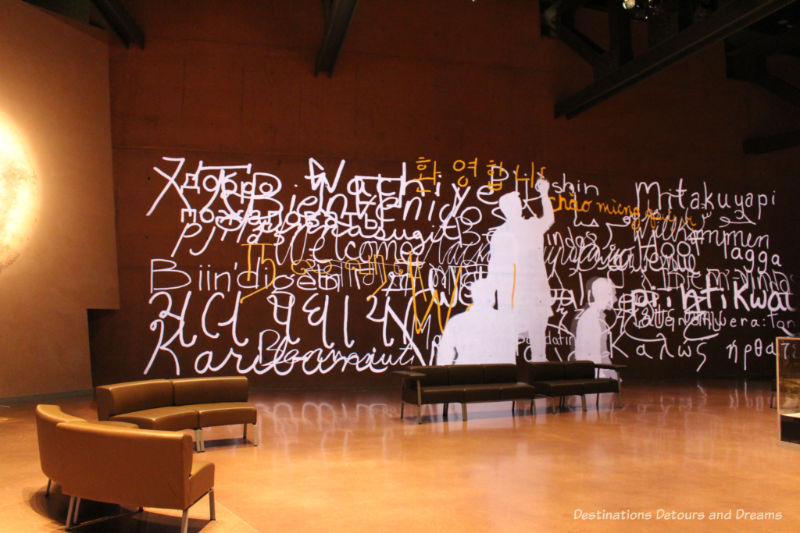
What to expect when taking a virtual tour of a museum, gallery, or landmark
As museums, art galleries, and landmarks have closed, partially re-opened, and closed again during the pandemic, I’ve seen more and more articles crop up about visiting these sites virtually. Some of the virtual tours were available before the pandemic; others have been created as a means for the institutions to connect during this period. I love visiting museums and historic sites, both at home and when I travel, but I didn’t embrace the idea of virtual visits. Perhaps fatigue with so much of life occurring virtually was a factor.
However, after many months at home and as the second wave brings a return to tighter lockdown measures, I’m relooking at the virtual visit. Yes, virtual overload still exists, but I think there were/are other factors involved in my resistance. One is the choice of museum itself. The other is the type of virtual experience. Virtual doesn’t mean the same thing in all cases.
Which Museums to Visit Virtually
First, let’s talk about the choice of a museum or other site for a virtual visit. When I visit a museum in the non-virtual world, it is often within the larger context of visiting a place. The museum experience is not an isolated incident. The museum’s content is relevant to my exploration of the area. That isn’t always the case, of course. There are museums dedicated to specific concepts or art and that content may have little to do with the location of the museum. And there are museums I’m interested in visiting solely because of the museum itself, but more often than not the visit is framed within the broader context of a visit to the area.
What does this mean to your virtual visit? I think one needs to be selective in what one chooses to visit virtually to truly appreciate the experience and avoid virtual burnout. If a specific museum has a strong appeal or a great wow factor, a virtual visit can be a great opportunity to see some of it. If there is a city or area on a bucket list, a virtual museum visit may offer more insight into the area. There may be museums one didn’t get to, for a variety of reasons including simply running out of time, in places one has already been to. Virtual visits of those museums may provide an enhanced hindsight appreciation of the destination or bring back fond memories.
But just as there are museums you deliberately bypass in the non-virtual world, there are virtual museum visits not worth your time because the content doesn’t resonate with you. I should note, however, that there have been a couple of museums I would not have chosen to visit without strong recommendations from friends. Those museums turned out to fabulous, so I shouldn’t have been so quick to dismiss them.
Types of Virtual Museum Experiences
Virtual means a lot of difference things, varying from online inventories of artifacts to immersive experiences. You are likely to find some approaches more engaging than others.
Online Collections
A number of museums have pages on their websites where they list important artifacts in their collection with photographs and descriptions. Going through these online collections does not simulate the in-person experience, but it does give a feeling for what is in the museum. The collections are useful if you are looking for specific types of information or particular artifacts.
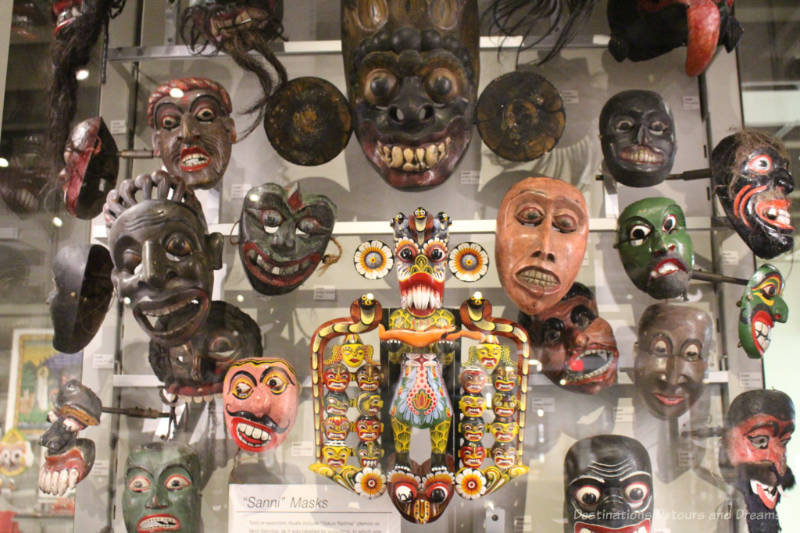
There is variety in how these inventory collections are presented. For example, the Museum of Anthropology in Vancouver, British Columbia (an excellent museum by the way – you can read about my in-person visit here) has an extensive list of objects on its collection page, organized alphabetically by categories. (Masks is one of the categories.) The British Museum in London allows you to move forward and backward on a “highway” of time from 2,000,000 BC to present day with lanes for each continent. Artifacts are shown as dots on the road. Clicking on a dot brings up information on the artifact. The Guggenheim Museum Bilboa in Bilboa, Spain guides you through a collection of its masterpieces via a slide-show format.
Photo Tours With Text and Audio
Craigdarroch Castle in Victoria, British Columbia, Canada was built in the late 1800s for the wealthy Dunsmuir family. Robert Dunsmuir died before the house was completed, but his widow Joan and three adult children did live in the house. Today the restored Victorian mansion operates as a house museum.
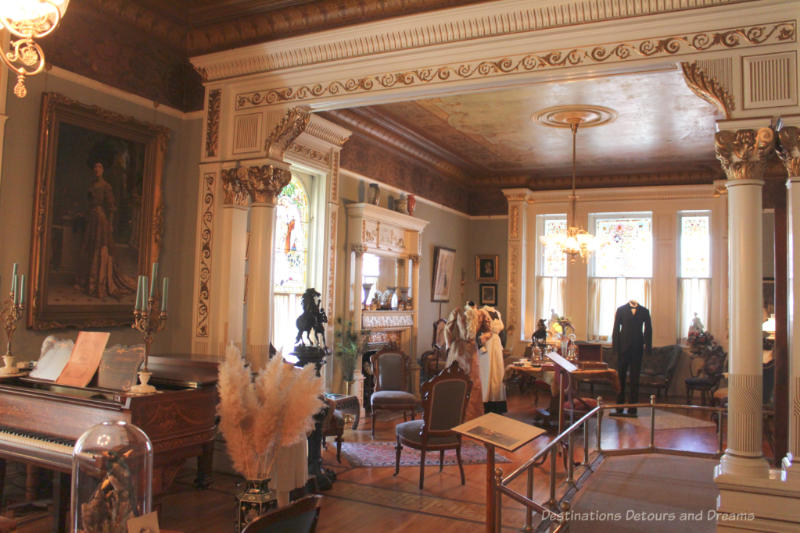
The virtual tour starts with a written introduction to the building and the family and then offers viewers the opportunity to select various rooms to explore. A photo of the room appears with one of more points of interest highlighted. Clicking on the highlighted point brings up details in textual format and the opportunity to hear a short audio recording in the “voice” of Joan or her son. I have visited this museum in person (read about my visit here) and think this tour is well-done. It isn’t quite the same as being there and doesn’t provide the full 360-degree view, but it conveys the spirit of the place and provides information on highlights.
360-Degree Views
Many museums offer 360-degree viewing options similar to those you may find on real estate listings. You use your mouse to change the view on your screen to look up, down, and sideways, and to navigate through a room and into other rooms. You can zoom in and out to see things up close or farther away.
Because you don’t get any additional information or background on what you are seeing, what it means, or how it was created, I think this works best in places where the visual experience is the main part of the experience.
The 360-degree view approach is very effective in this virtual tour of the Vatican. I haven’t toured the Vatican in person and cannot say how close the virtual tour comes to capturing the majesty of the in-person experience, but there is definitely a wow factor in the virtual experience.
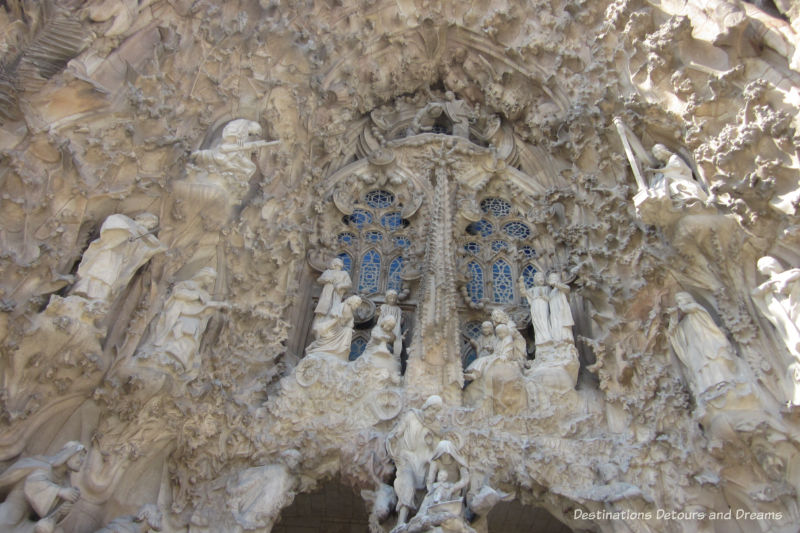
A similar approach is used in the virtual tour of Basílica de la Sagrada Família in Barcelona, Spain. In this case, music accompanies the tour. La Sagrada Família, a UNESCO World Heritage site, was designed by Antoní Gaudi. Construction began in 1882 and continues today. (Approximately one quarter of the project remains to be finished. Construction was targeted to complete in 2026, the centenary of Gaudi’s death, but that has been delayed by the pandemic.) Ten sections of the basilica have individual 360-degree views (you need to select each one separately). I toured La Sagrada Família in 2013 and think this tour does a good job of capturing the awesome beauty of this space. (I was pleased to see that there are more stained glass windows installed in the interior than when I visited.) What the tour doesn’t give is background on the construction, history, and symbolism of architectural elements. This type of information was provided in the in-person guided tour and enhanced my appreciation of the building.
360-Degree Views With Additional Information
Some 360-degree view tours provide background and additional information via textual sideboards, textual information in pop-up boxes, or audio explanations. I personally like this approach.
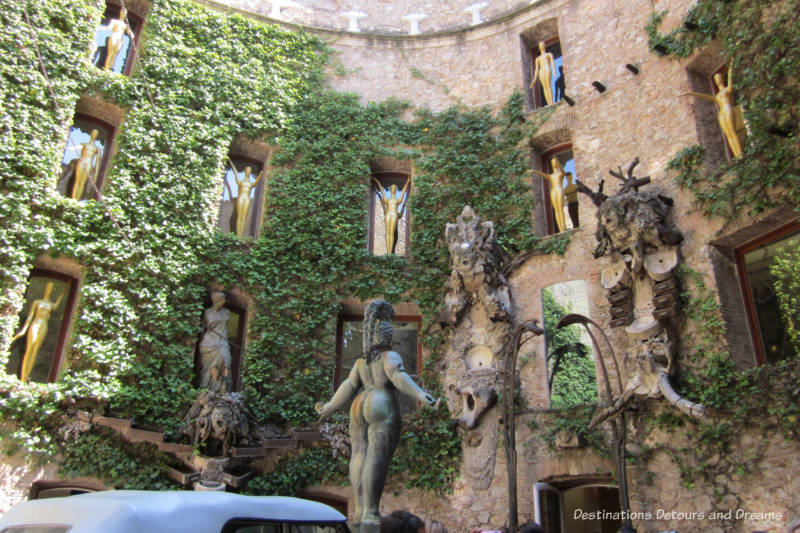
The virtual tour of Dalí Theatre Museum in Figueres, Spain effectively uses the technique of pop-up boxes. Various spots in the museum are marked with circles. When you roll your mouse over the circle, a box with information about the room, the piece of art, or Dalí himself pops up. I’ve visited this museum myself and think the virtual tour offers a good view and experience of this museum.
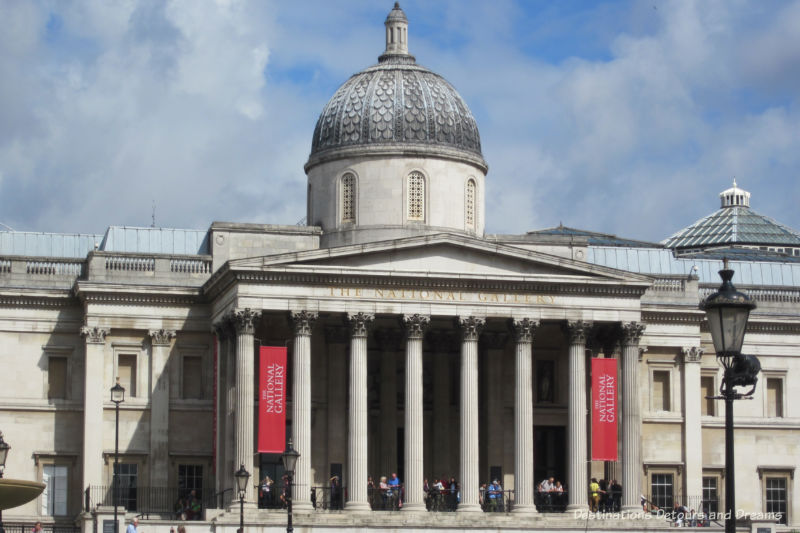
The National Gallery in London offers a similar type of tour, as does Dalnavert Museum in Winnipeg, Manitoba, Canada. Digital tours of the historical sites of Machu Picchu and Petra are accompanied by audio explanation.
Video Tours
In its simplest form, a video tour is similar to a 360-degree view, but the tour moves on its own without you directing the mouse. You have less control as you follow along. You do have the opportunity to pause the video at any point to allow you to look more closely at something. This approach works particularly well for art museums. The drawback is that frequently you are not able to read the museum label beside the piece of art and cannot, therefore, get more information about the piece.
The Van Gogh Museum in Amsterdam offers several musically-accompanied video tours of this nature. Like the Van Gogh tour, the majority of the virtual tours I’ve seen of this type showcase the museum or gallery without other people around. This video tour of the Louvre Museum in Paris, France puts you in the midst of the visiting crowd. It is accompanied by the noise of people instead of music. I personally haven’t decided yet if I find that a distracting or a pleasantly immersive experience, but I will admit my first look at the groups of people was a bit jarring after months of distancing.
Guided Video Tours
Video tours with a person providing audio information throughout the tour, if done well, may come the closest to the in-person experience.
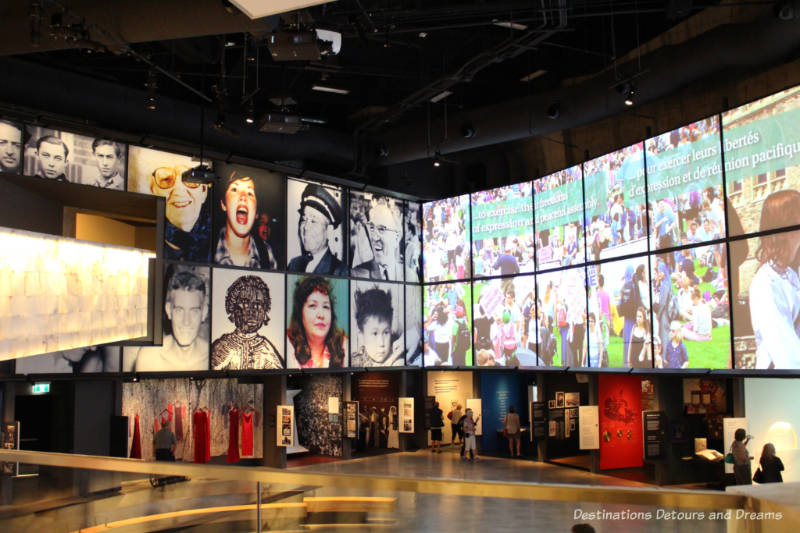
Since the pandemic was declared, the Canadian Museum of Human Rights in my home city of Winnipeg, Manitoba, Canada has created three separate guided video tours: one on the architecture of the museum; one on the view from the top; and one featuring two galleries in the museum – Indigenous Perspectives and Canadian Journeys. I’ve visited this museum several times and feel the videos give a good sense of the museum. However, they do not cover all there is to see and experience in person.
Thoughts On The Virtual Experience
After looking more into virtual tours, I’ve come to better appreciate the virtual experience. While not the same as an in-person visit, many of the tours are interesting and enjoyable. There are still some I am not interested in at all and I prefer some formats more than others. Everyone will have their own preferences.
How do you find a virtual tour that may be of interest to you? If there is a specific museum, gallery, or site you are interested in, check their website for their virtual offerings. If there is a particular city or region you’d like to explore but don’t have a particular museum or historical site in mind, check the tourism websites for the area to identify specific sites of interest. Use Google. Don’t hesitate to pass on a tour whose format you don’t enjoy, but don’t rule out all other virtual tours because of it. Not all virtual tours are created equal.
Never miss a story. Sign up for Destinations Detours and Dreams free monthly e-newsletter and receive behind-the-scenes information and sneak peeks ahead.
PIN IT
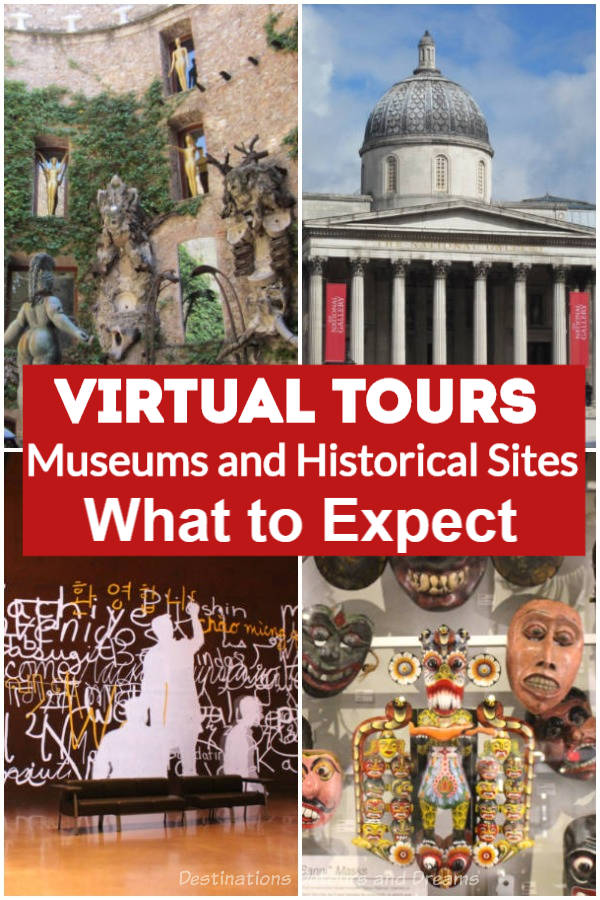

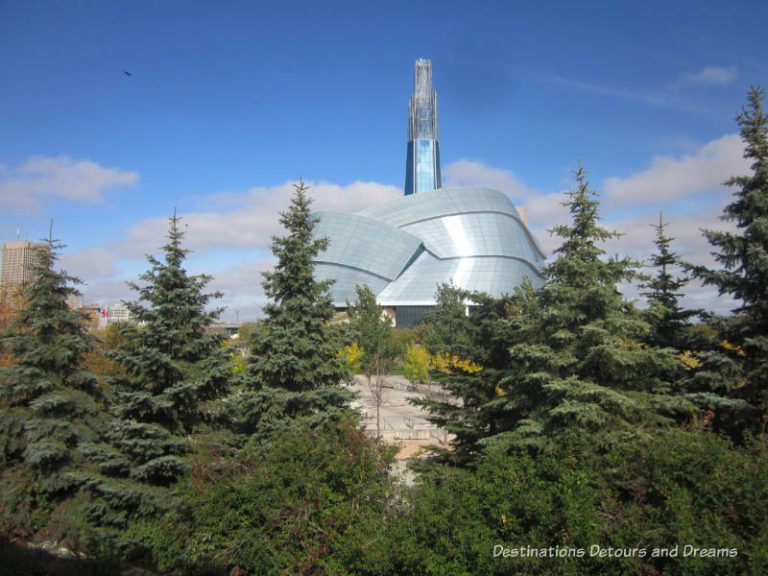
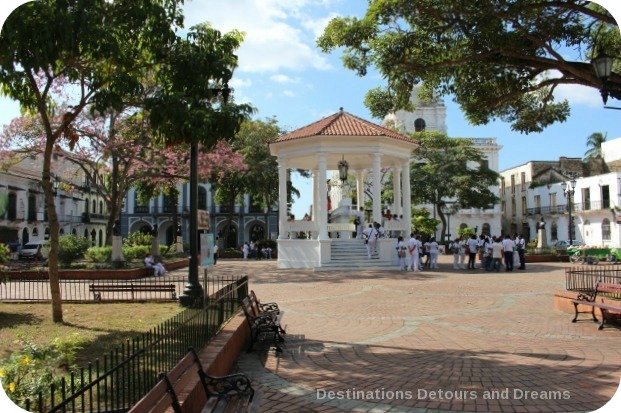
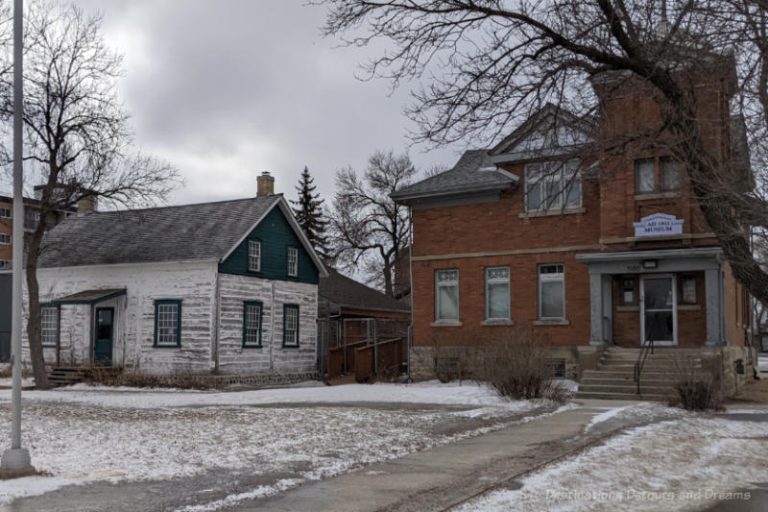

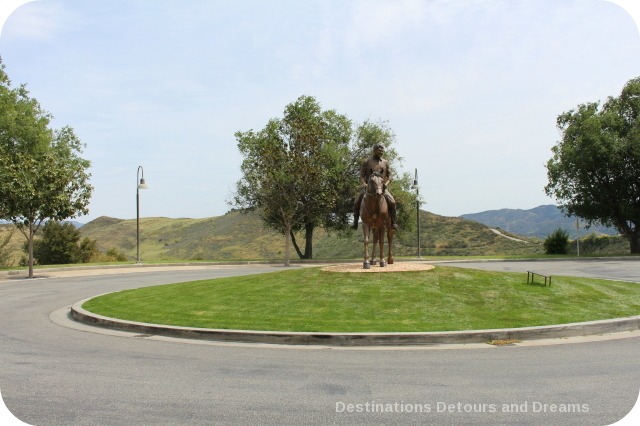
Haven’t done a virtual museum tour. My reaction to them is similar to your initial reaction. Some of the museums have put together programs that involve lectures, discussions or films and I have participated in a few of those, but as for virtual tours, I’m still a holdout.
Ken, I’ve come across some of those virtual lectures and discussions. So far I haven’t sat in on many, but it looks as if there some very interesting options to choose from.